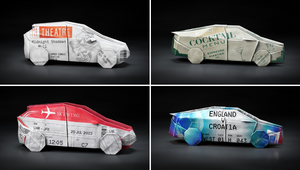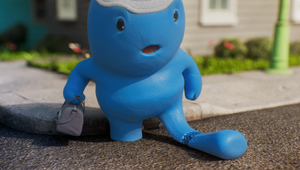
Virtual Reality: A New Media?

"Virtual Reality now is what the first mobile phones were in the 1980s," commented Richard Vincent, Founder of Fundamental VR, during the “Virtually Real: Advertising’s Virtual Future” seminar at Advertising Week Europe. The technology is perceived as clunky, unexplored, and some would argue unnecessary. Slate reported that in the early days of mobile phones, one source told the Monitor that “cellular phones will absolutely not replace local wire systems.” Sound familiar to some of the VR chatter?
But we—production studios and content creators– are standing at a precipice. We can walk away and incorrectly dismiss VR, similar to those that dismissed the mobile phone or the internet in their early days. Or, we can take a step forward and help our clients use this technology to reach their audience. It is predicted that the number of VR headsets will reach 20 million users in the next 2-3 years, it is our job to make sure that our clients are meeting their consumers there.
VR is seen as a technology for serious gamers, and with Sony about to launch their VR solution to a potential installed base of 30 million users, that is not incorrect. But, in parallel, healthcare, engineering and social experience are sure to be leading any early adopters. Imagine the possibilities: a healthcare professional looking inside the human heart to study a drug’s interaction with a patient; a surgeon operating while consulting with experts on other side of the globe; engineers collaborating with their design partner groups globally on the latest vehicle in a virtual space; the best teachers communicating simultaneously and interactively with thousands of students to provide each of them with the ultimate engagement experience.
I attended the “Virtually Real: Advertising’s Virtual Future” seminar as part of Advertising Week Europe to hear the panellists thoughts on VR today, its future, and the opportunities for advertisers within the experience. Tanya Laird, Founder of Digital Jam and a VR Evangelist, put the power of the platform very simply: VR makes impression on the viewer because he/she experiences something. With our current platforms, people only view or listen to the message. The experiential offers limitless opportunities for marketers and advertisers.
The event saw us attempt a mass download live VR experience which was viewed on cardboard devices that transformed our smartphones into a makeshift VR headset. The experience was dogged by the usual downloading technical issues (and a little VR nausea), but it was educational and engaging. Every time I put on a headset, whether it be a high-end headset or cardboard and a smart phone, I experience the beauty of the medium: you are fully immersed. Unlike any other media, the time with the viewer is distraction-free – there is no second screen. Advertisers could even work towards developing brand-owned spaces within the wider experience or game environment.
At Mobile World Congress, Mark Zuckerberg called VR “the most social platform,” and Facebook recently invested $2 Billion on Oculus. As content creators, we should be similarly enthusiastic—in recent memory mobile phones, the internet, and social media have revolutionised how we live our daily lives, not to mention how we interact with brands. The challenge lies in creating engaging, quality content that is relevant to audiences.
Neil Scaife, Marketing and Planning Director of London agency WRCS, suggested that current virtual reality experiences have often been disconnected from the brands they represent. How do we fix the disconnect between intention and the VR experience? How do we make VR relevant and not another fad?
At Taylor James, our creatives are thinking in different ways. We began as a retouch studio, transitioned from 2D to 3D, and now are exploring how campaigns can translate to experiential virtual environments. This all requires new software, new hardware but perhaps, most importantly, new and creative methods of storytelling. We take time understand our clients’ brands and the agency’s creative vision to ensure that we craft the most intelligent production solution. Our skilled artists work across disciplines to bring productions to life, from concept to completion—across all media—from print all the way through experiential.
There is a change coming to our industry, and as content creators we are responsible for partnering with our clients to navigate new mediums of communication. Will VR will become a completely new medium for marketers? Is mixed reality that will become the new king? Time will tell. But it is up to us to help agencies and brands extend campaigns into virtual environments, to engage consumers beyond sight and sound and truly immerse the consumer in the experience.
Keith Jeffery runs the Automotive Division for Taylor James globally, you can find out more about is thoughts on production for automotive marketing, VR, future technologies on LinkedIn.















